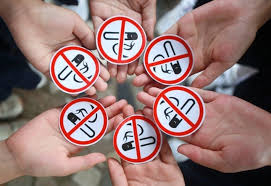Tobacco Control Efforts Protect 6.1 Billion People, But Over 1 Billion Still at Risk — WHO’s New Report - ENA English
Tobacco Control Efforts Protect 6.1 Billion People, But Over 1 Billion Still at Risk — WHO’s New Report

Addis Ababa, June, 24, 2025 (ENA)— More than 6.1 billion people—roughly three-quarters of the global population—are now protected by at least one tobacco control measure under the World Health Organization’s (WHO) MPOWER strategy.
This milestone was revealed in WHO’s Global Tobacco Epidemic 2025 report, launched on June 23 at the World Conference on Tobacco Control in Dublin.
The MPOWER package, introduced in 2007, consists of six proven strategies aimed at reducing tobacco use: monitoring tobacco use and prevention policies, protecting people from tobacco smoke, offering help to quit tobacco, warning about the dangers of tobacco, enforcing bans on advertising and promotion, and raising taxes on tobacco products.
Back in 2007, only 1 billion people were covered by at least one of these measures. The new figure reflects a major global shift in tobacco control efforts.
According to the report, 155 countries have implemented at least one MPOWER measure at best-practice level. Four countries—Brazil, Mauritius, the Netherlands, and Türkiye—have fully implemented all six measures, while seven others, including Ethiopia, Ireland, Jordan, Mexico, New Zealand, Slovenia, and Spain, are one step away from full implementation.
Despite this progress, the report highlights serious gaps.
Forty countries have yet to adopt a single MPOWER measure at the highest recommended standard. Moreover, over 30 countries still allow the sale of cigarettes without mandatory health warnings. WHO warns that interference from the tobacco industry is a growing challenge that threatens to undermine the gains made over the past two decades.
A major success highlighted in the report is the increase in graphic health warnings on tobacco packaging.
In 2007, only nine countries required such warnings; today, that number has risen to 110, covering 62% of the global population. Additionally, 25 countries have introduced plain packaging to reduce the appeal of tobacco products. However, enforcement remains uneven, and packaging regulations for smokeless tobacco are still weak in many regions.
The report also notes that 110 countries have not run anti-tobacco media campaigns since 2022, despite their effectiveness. Nevertheless, 36% of the global population now lives in countries that have launched best-practice campaigns—up from 19% just three years ago.
Progress in areas such as taxation, quit support, and advertising bans has been slower. Only three countries have raised tobacco taxes to the best-practice level since 2022, and 134 countries still fail to make cigarettes less affordable. Just one-third of the global population has access to fully covered tobacco cessation services. Comprehensive advertising bans exist in only 68 countries, reaching just 25% of people worldwide.
Second-hand smoke remains a critical issue, causing an estimated 1.3 million deaths annually. WHO reports that 79 countries now have smoke-free laws in place, with recent adopters including Indonesia, Malaysia, Sierra Leone, Slovenia, and Uzbekistan.
Meanwhile, regulation of electronic nicotine delivery systems (ENDS), such as e-cigarettes, is expanding. The number of countries regulating or banning ENDS has increased from 122 in 2022 to 133 in 2024. However, more than 60 countries still lack any form of regulation.
WHO calls for urgent global action to close policy gaps, strengthen enforcement, and resist tobacco industry influence, stressing that continued investment in proven tools is essential to ending the tobacco epidemic.